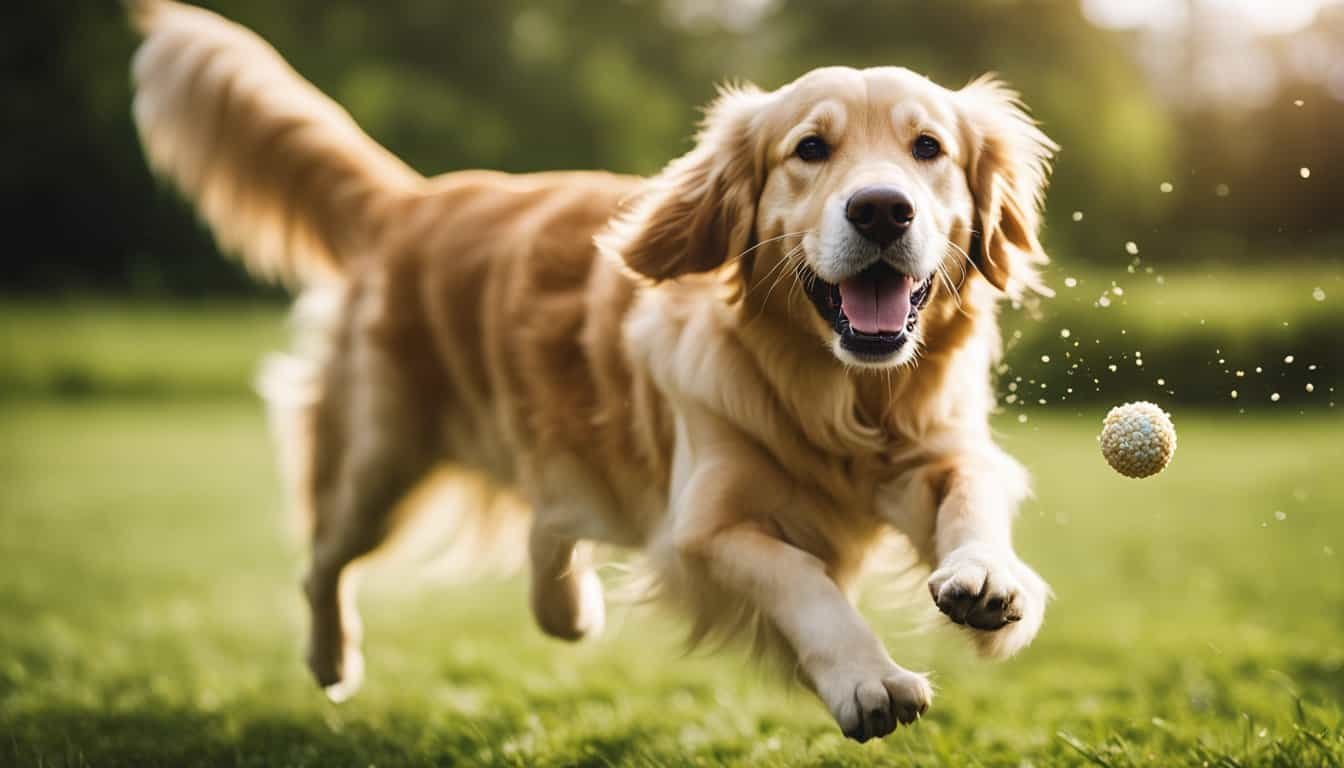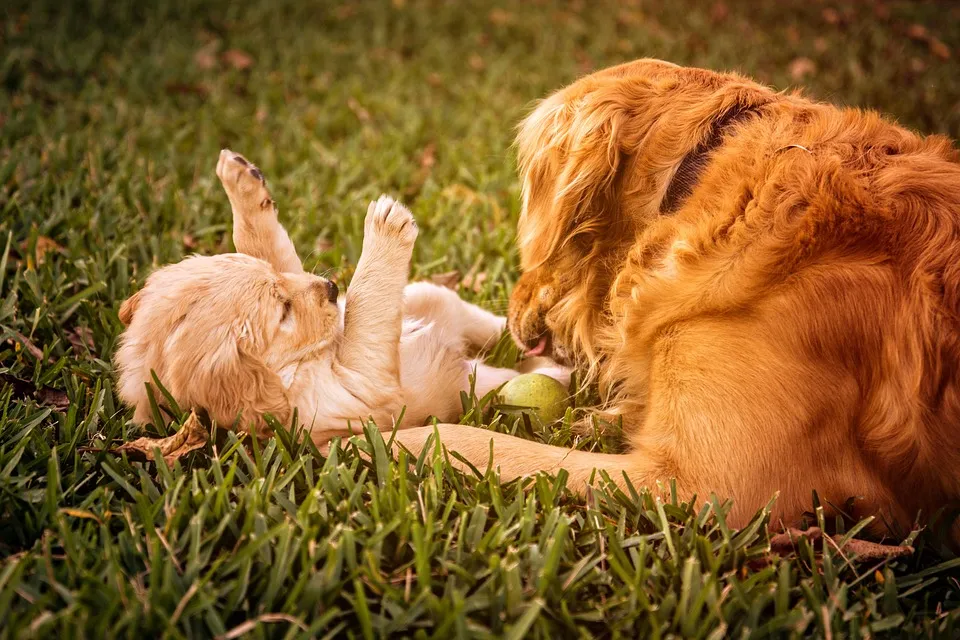Are you considering crate training a golden retriever? If so, you’re in luck! Golden retrievers are known for being one of the easiest dog breeds to crate train. With their intelligent and eager-to-please nature, they quickly adapt to the crate and see it as their safe and cozy den. In this article, we’ll explore why golden retrievers are a great choice for crate training and provide you with some helpful tips to make the process even smoother.
Crate training can be a valuable tool for both you and your golden retriever. Not only does it provide a safe space for your pup when you’re unable to supervise them, but it also helps with house training and prevents destructive behaviors. Golden retrievers, being a highly trainable breed, tend to take to crate training effortlessly. Their natural instinct to seek out a den-like environment makes them more receptive to the crate, making the training process a breeze.
When it comes to crate training, consistency is key. Golden retrievers thrive on routine, so establishing a consistent schedule for crate time is essential. Start with short periods and gradually increase the duration as your pup becomes more comfortable. Remember to make the crate a positive and inviting space by using treats, toys, and praise. With a little patience and consistency, you’ll find that golden retrievers are a joy to crate train.
What is Crate Training for Dogs?
Crate training is a highly effective method of teaching your dog to feel comfortable and secure in their own personal space – the crate. It involves introducing your dog to a crate and gradually getting them accustomed to spending time inside it. Crate training provides numerous benefits for both you and your furry friend, and is especially helpful when it comes to golden retrievers and Goldendoodles.
Here are a few key aspects of crate training:
- Safe Space: Just like humans, dogs need a place to call their own. A crate serves as a den for your golden retriever or Goldendoodle, a place where they feel secure and protected. It becomes their sanctuary, a quiet retreat where they can relax and unwind.
- House Training Aid: One of the major advantages of crate training is that it can greatly facilitate the house training process. Dogs naturally strive to keep their living area clean, and the confined space of a crate helps them develop bladder and bowel control. By utilizing the crate during the early stages of house training, you’ll minimize accidents and establish good potty habits.
- Preventing Destructive Behaviors: Dogs, especially puppies, are curious and energetic creatures. Crate training allows you to safely contain your golden retriever or Goldendoodle when you can’t directly supervise them. This prevents them from engaging in destructive behaviors, such as chewing on furniture or getting into mischief.
- Travel and Vet Visits: Crate training prepares your dog for various situations, including travel and visits to the veterinarian. Your dog will already be comfortable in their crate, making these experiences less stressful for both of you.
Remember, crate training should never be used as a form of punishment. It’s crucial to create a positive association with the crate. Make it inviting by placing their favorite toys, soft bedding, and even some treats inside. Use praise and rewards to reinforce their good behavior when they willingly enter the crate.
So, whether you have a golden retriever or a Goldendoodle, crate training is an invaluable tool that will benefit both you and your furry friend. Start early, be patient, and watch as your dog learns to love their crate as their own personal retreat.
The Temperament of Golden Retrievers
If you are considering crate training your golden retriever, it’s important to understand their temperament. Golden retrievers are known for their friendly and outgoing nature, making them a popular choice for families and individuals alike. They are intelligent, eager to please, and easy to train, which makes crate training a breeze!
Golden retrievers have a natural instinct to be close to their humans, and this can work to your advantage during the crate training process. They are often referred to as “velcro dogs” because they love to be by your side at all times. This loyalty and desire for companionship make them more receptive to crate training.
Another notable trait of golden retrievers is their adaptability. They are known to be highly adaptable to various living situations, making them suitable for crate training in different environments. Whether you live in a small apartment or a spacious house, your golden retriever will adjust to their crate with ease.
Golden retrievers are also known for their gentle nature. They are generally good-natured and patient, which makes them a great choice for families with children or other pets. This gentle disposition extends to their crate training as well. With a little patience, consistency, and positive reinforcement, your golden retriever will quickly learn to feel secure and comfortable in their crate.
In addition to their temperament, golden retrievers also have a natural desire to please their humans. They thrive on praise and positive reinforcement, and your golden retriever will quickly learn that their crate is a safe and rewarding place. By using treats, toys, and plenty of verbal praise, you can create a positive association with the crate and make the training process even more enjoyable for your furry friend.
Benefits of Crate Training for Golden Retrievers
Crate training your golden retriever offers a host of benefits for both you and your furry friend. Whether you’re a new puppy parent or have an adult golden retriever, crate training can help create a safe and secure space for your pet. Let’s explore some of the key benefits!
1. Provides a Safe Space: Dogs naturally crave a den-like environment, and a crate can fulfill that need. By providing a crate, you give your golden retriever a place they can call their own, where they can relax and feel protected. This can help alleviate anxiety and decrease stress levels for your pet.

« 10 Surprising Hacks to Banish Golden Retriever Odor for Good
Discover the Surprising Truth: How Long Does a Golden Retriever’s Labor REALLY Last? Find Out Now »
2. Aids in House Training: Crate training can be a valuable tool for house training your golden retriever. Dogs have an instinct to keep their sleeping area clean, so when properly introduced to the crate, they are less likely to soil it. The crate creates a structured routine and helps reinforce good bathroom habits.
3. Prevents Destructive Behaviors: Golden retrievers are active and curious dogs. By crate training, you can help prevent your furry companion from engaging in destructive behaviors when you’re not able to supervise them. A crate provides a safe space to confine your pup, ensuring they don’t chew on furniture, shoes, or other household items.
4. Eases Travel and Vet Visits: Crate training is not only beneficial at home but can also be handy when traveling or visiting the vet. Familiarity with the crate allows your golden retriever to feel more secure in unfamiliar environments, reducing stress during car rides or vet appointments.
5. Enhances Adaptability: Golden retrievers are highly adaptable dogs. Crate training can help foster their adaptability as they become accustomed to different living situations. Whether you move homes or travel frequently, a crate-trained golden retriever will easily adjust to new surroundings.
Remember, crate training should always be done using positive reinforcement. Make the crate a positive and comfortable place for your golden retriever, using treats, toys, and blankets to create a positive association. Patience and consistency are the keys to successful crate training.
Tips for Crate Training a Golden Retriever
Crate training can be an effective way to provide your golden retriever with a safe and comfortable space while helping them learn proper behavior. Here are some tips to make the crate training process easier for both you and your furry friend:
1. Choose the Right Crate
Select a crate that is appropriately sized for your golden retriever. It should be big enough for them to stand up, turn around, and lie down comfortably, but not so large that they can use one corner for sleeping and another for eliminating. This will encourage them to hold their bladder and bowels while inside the crate.
2. Gradual Introduction
Introduce the crate slowly and positively. Start by placing the crate in a common area of your home where your golden retriever can see and sniff it. Leave the crate open and let them explore it at their own pace. Gradually encourage them to enter the crate by using treats or their favorite toys. Make it a positive experience by praising and rewarding them for going inside.

3. Set a Routine
Establish a routine for crate training. Feed your golden retriever their meals near or inside the crate, leaving the door open. This will create a positive association with the crate and help them see it as a safe space. Additionally, incorporate short periods of confinement in the crate, gradually increasing the duration as your golden retriever becomes more comfortable.
4. Positive Reinforcement
Use positive reinforcement to reward desired behaviors. When your golden retriever voluntarily enters the crate, offer them treats and praise. If they are calm and quiet while inside, reward them with verbal praise or a favorite toy. This will help reinforce the positive association with the crate and encourage them to see it as a positive place to be.
5. Patience and Consistency

Be patient and consistent throughout the crate training process. It may take some time for your golden retriever to adjust to being crated, so remain calm and supportive. Avoid using the crate as a form of punishment, as this can create negative associations. With consistent training and positive reinforcement, your golden retriever will learn to love their crate as their own personal sanctuary.
Remember, crate training is not a one-size-fits-all solution. Every dog is unique, and it’s important to adapt the training process to suit your golden retriever’s needs and personality. Keep these tips in mind as you embark on crate training your golden retriever, and soon enough
Common Challenges in Crate Training Golden Retrievers
Crate training can be a fantastic tool for teaching your golden retriever to feel secure and comfortable in their own personal space. However, like any training method, it’s not without its challenges. As a dog lover with experience working at animal shelters and veterinary offices, I’ve encountered some common hurdles that golden retriever owners face when crate training. Here are a few challenges you might encounter along the way:
1. Separation Anxiety: Golden retrievers are known for their strong bond with their humans, and this can sometimes lead to separation anxiety when left alone in a crate. They may whine, bark, or even become destructive. To overcome this, start by gradually building up your golden retriever’s tolerance to being alone in the crate. Practice leaving them for short periods of time and gradually increase the duration.
2. Stubbornness: Despite their friendly and eager-to-please nature, golden retrievers can occasionally be stubborn when it comes to crate training. They might resist entering the crate or refuse to stay inside. Patience and positive reinforcement are key here. Use treats, praise, and toys to create a positive association with the crate and make it a rewarding experience for your golden retriever.

3. Accidents in the Crate: House training can be a challenge for any dog, and golden retrievers are no exception. Accidents in the crate can sometimes occur, especially if your golden retriever is not fully house trained yet. It’s important to never punish your dog for accidents and instead focus on consistent and positive reinforcement for appropriate bathroom behavior.
4. Size and Growth: One challenge many golden retriever owners face is choosing the right crate size. Golden retrievers are a medium to large-sized breed, and their growth can vary. It’s important to select a crate that allows your puppy to stand, turn around, and lie down comfortably. As your golden retriever grows, you may need to upgrade to a larger crate to accommodate their size.
Remember, crate training takes time and consistency. Each golden retriever is unique, and some may require more patience and adjustments than others. By understanding and addressing these common challenges, you can help your golden retriever become comfortable and happy in their crate. With dedication and positive reinforcement, crate training can be a rewarding experience for both you and your furry friend.
Conclusion
By addressing challenges such as separation anxiety, stubbornness, accidents in the crate, and choosing the right crate size, you can ensure that crate training is a rewarding experience for both you and your golden retriever. Patience, positive reinforcement, and consistency are key in helping your dog feel comfortable and secure in their own personal space.
Crate training provides your golden retriever with a sense of security and a designated area that they can call their own. It helps to prevent destructive behaviors and promotes good habits, such as house training.

Remember, crate training is a process that takes time and effort. Be patient with your golden retriever, and always use positive reinforcement to encourage desired behaviors. With consistency and dedication, your golden retriever will learn to love their crate and see it as a safe haven.
So, if you’re considering crate training your golden retriever, don’t be discouraged by the challenges that may arise. With the right approach and a little bit of time, your golden retriever can become comfortable and happy in their crate, making it a valuable tool for both of you.








